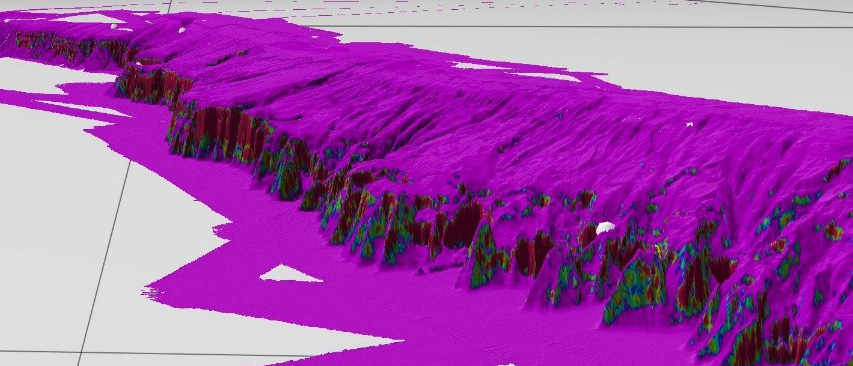The Hydrodynamics & Habitat Suitability for Meiofauna And Corals (HydroSMAC) Mission
by Sandra Brooke, Chief Scientist.
From October 1st to 10th, a team of scientists from Florida State University (FSU), Florida Agricultural and Mechanical University (FAMU) and NOAA National Centers for Coastal Ocean Science (NCCOS), sailed aboard the Research Vessel Point Sur and used the Remotely Operated Vehicle (ROV) Global Explorer to study benthic communities off the West Florida Escarpment (WFE). This study is funded by NOAAs Office of Ocean Exploration and Research.
Our mission focused on exploration of deep (>1,000m) habitats of the WFE, with particular emphasis on hard-bottom communities such as corals and sponges, and the tiny animals called meiofauna that live in sediments. Our objectives were to generate new data on distribution of coral species in this understudied area, and to assess whether we can use meiofauna communities as indicators of ambient current regimes. We will work with NOAA collaborators to incorporate our data into their Habitat Suitability Models and to ‘ground truth’ oceanographic current models.
Background
The eastern Gulf of Mexico (GOM) is dominated by a massive carbonate platform that slopes gently for over 200 km offshore before dipping sharply down to abyssal depths. The deep slope and escarpment of this platform is one of the least accessible places in the GOM; it is far from shore, very deep and is subject to high current conditions.
Unlike the northern GOM, there has been little research effort in this region; however, in recent years several cruises (funded primarily by NOAA), conducted mapping and surveying of the west Florida slope (WFS) and in search of deep coral communities. The cruises revealed extensive deep coral habitats including large Lophelia reefs. Most of this work was on the upper slope (350-600 m). Further offshore, the slope steepens to form the WFE, which is virtually unexplored. The NOAA Ship Okeanos Explorer mapped and surveyed the WFE in 2014 and 2018, revealing dense coral communities, with different species assemblages from those on the upper slope.
Pressure to protect DSC habitats has created a need to understand their distribution. To overcome the lack of data, modeling tools were developed that use data from known deep coral areas, and extrapolate those characteristics to unexplored areas. These Habitat Suitability Models are heavily influenced by coral records, so areas with limited data show low habitat suitability, which may not reflect the true distribution. These models may be further refined by incorporating coral-relevant variables such as current speed using data from oceanographic models. This combination of sophisticated models and known coral locations creates a more powerful predictive tool for science and management.






